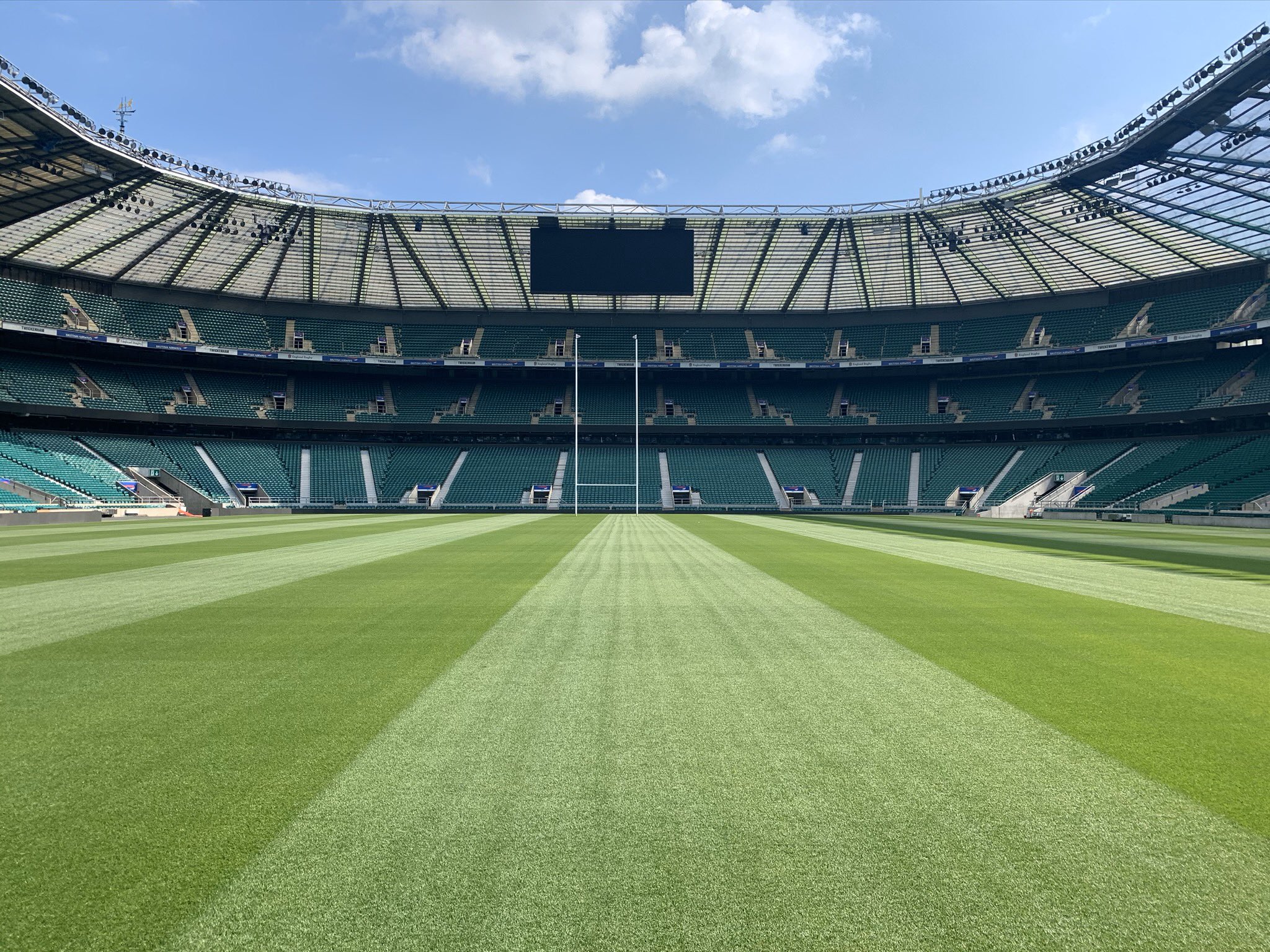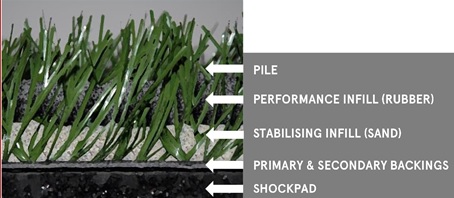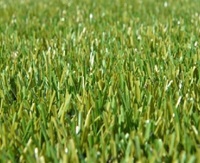Essential Guide to Artificial Grass Pitches
What is Artificial Rugby Turf?
Artificial Rugby Turf is the term World Rugby uses to describe artificial grass surfaces designed for use in the game of Rugby Union. The diagram below shows a typical cross section of an Artificial Rugby Turf surface.
What is meant by 3G/4G/5G?
There is no such thing as a 4G/5G pitch as recognised by the AGP industry. 3rd Generation or 3G pitches use the most up to date technology available. The term 3G relates to systems that use a long pile carpet with sand and rubber infill. Any use of the term 4G or 5G is incorrect. You may hear it from company reps who are trying to gain an edge on competitors by making a very minor change to the specification and selling it as 4G or even 5G. The pitches at Saracens, Worcester and Newcastle are 3G.
Is a 3G pitch suitable for Rugby Union?
A 3G pitch is not necessarily appropriate for contact rugby union. Whether or not a surface is suitable for contact rugby union (matches or training) is extremely straightforward. The pitch simply has to have an up to date test certificate that demonstrates compliance to World Rugby Regulation 22. This test must be carried out by a World Rugby accredited test institute. World Rugby regulation 22 relates to the performance standard of the pitch and measures criteria such as head impact, skin friction, joint strength and energy restitution. These tests reflect the characteristics of a good quality natural turf pitch. Test certificates should be forwarded to the RFU Club Facilities Technical Manager, Ted Mitchell, so a formal 'permission to use' letter can be issued from the RFU. The World Rugby Regulation 22 test must be renewed every 2 years. There is no way to tell if an AGP is suitable for contact rugby union simply by looking at it but a list of all World Rugby compliant AGPs in England is on englandrugby.com along with their test status.
Rugby and other sports
AGP systems can be manufactured and installed so that they meet all the requirements of World Rugby, RFL and FIFA, BUT if a pitch is certified by RFL/FIFA this does not necessarily mean it meets World Rugby regulations. There are currently no systems available that meet the requirements of World Rugby and FIH (for competition level hockey).
AGPS and Injury Research
The most recent research into AGPs and injuries in rugby union has been carried out by Fuller Et Al (2010) and by the RFU, RPA, PRL and Bath University with an injury research programme on the AGPs at Allianz Park and Kingston Park (2013/14 and 2014/15). Fuller Et Al concludes that "there was no significant difference in the overall incidence or severity of injury sustained with artificial turf compared with grass". The Bath University Research concludes that "there were no clear differences in the incidence, severity or injury burden of non-time loss or time loss injuries between matches played on artificial and grass surfaces". For more information on these academic reports into AGPs and injury risk please contact: tedmitchell@rfu.com.
Non-Contact
Non-contact activity should be managed in the same way as it would be on any other surface (i.e. a hard/dry natural turf pitch or an indoor sports hall) so activity undertaken should be risk assessed by the person in charge of the session as normal based on all contributing factors.
Footwear
All AGP site operators will be able to advise you on what footwear is suitable on their particular facility, but as a general rule, rugby boots with moulded or screw in studs are suitable for artificial turf pitches but trainers and blades are not.
Insurance
A statement is on englandrugby.com from the RFU Insurance Broker which states that an AGP that has been tested and subsequently signed off by the RFU is treated in the same way as a natural turf pitch for insurance purposes. Pitches that do not have an up to date test certificate may not have appropriate insurance.




 Tweet
Tweet